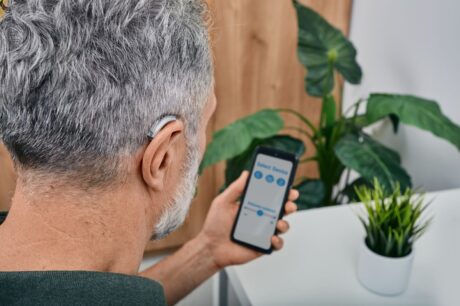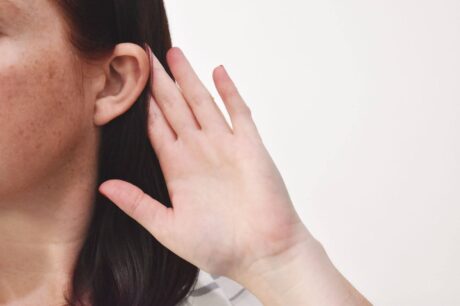Getting water stuck in your ear is a common experience, especially after swimming or showering. While it might feel uncomfortable, water trapped in the ear can lead to more serious issues like infections if left untreated. Fortunately, there are simple and safe techniques to remove water and prevent complications.
Signs That Water Is Trapped in Your Ear
Recognising the signs of water trapped in your ear can help you take timely action:
- Fullness in the ear: You might feel pressure or fullness as if something is blocking the ear canal. This can be particularly noticeable when changing head positions or after activities like swimming. The sensation may become more pronounced if the water doesn’t drain naturally.
- Muffled hearing: Sound may seem distorted or quieter than usual, making conversations or listening to music feel dull or unclear. This occurs because the trapped water affects the vibration of sound waves in the ear canal.
- Tickling sensation: A tickling feeling, often deep in the ear canal, may extend to your jaw or throat. This sensation can be intermittent or continuous, depending on how the water is trapped.
Techniques to Get Water Out of Your Ear
If there’s water in your ear, try these safe and effective techniques to unblock them:
Gravity Method
The gravity method is a simple and effective way to let water drain naturally from your ears by using the pull of gravity. This technique relies on specific head positions and gentle movements to create a pathway for water to escape.
- Tilt and Jiggle: Tilt your head to the side with the affected ear facing down. Gently tug or jiggle your earlobe to encourage the water to drain. The movement helps create a pathway for the water to escape.
- Lie on Your Side: Lie down with the blocked ear facing downward for a few minutes. Gravity can help draw the water out naturally, especially if combined with a gentle ear tug.
Creating a Vacuum
The vacuum method is designed to draw water out of the ear by creating suction. This approach uses your hand to form a seal over the ear, generating a gentle vacuum effect to help remove the trapped water. Here’s how to get water out of your ears using this method:
- Place the palm of your hand over the affected ear, ensuring a tight seal is formed to create suction.
- Gently press your hand inward toward the ear, creating a slight inward pressure.
- Slowly pull your hand away from the ear to create a suction effect that helps dislodge the water.
- Repeat this process a few times, performing the movements slowly and carefully to avoid discomfort.
Valsalva Manoeuvre
The Valsalva manoeuvre is a technique designed to equalise pressure in the ears by gently opening the Eustachian tubes. This can help relieve the sensation of fullness and allow trapped water to escape.
To perform the Valsalva manoeuvre, pinch your nose, close your mouth, and blow gently as though you’re trying to inflate a balloon. This creates pressure in your nasal cavity, which can open the Eustachian tubes and help release any water or trapped air in your ear canal. Be cautious when blowing gently to avoid causing strain or damage to the ears.
Warm Compress
Using a warm compress is a soothing method to help trapped water drain from your ears by opening the Eustachian tube. Follow these steps to perform this technique:
- Soak a clean cloth in warm water and wring out the excess liquid.
- Gently place the warm compress against the affected ear for about five minutes.
- Remove the compress and tilt your head to allow any loosened water to drain naturally.
- Repeat this process as needed, ensuring the compress is comfortably warm and not too hot to avoid burns.
What Not to Do When Water Gets in Your Ear
It’s important to avoid risky practices that can cause more harm:
- Avoid cotton swabs: Cotton swabs can push water deeper into the ear canal or even damage delicate structures. This increases the risk of infections or earwax impaction.
- No sharp objects: Never insert sharp or pointed objects into your ear, as they can cause injury, perforate the eardrum, or lead to infections.
- Avoid forceful blowing: Blowing your nose too forcefully can worsen the blockage or damage your ears. Always use gentle techniques to avoid pressure-related injuries.
Preventing Water from Getting Stuck in Your Ears
Prevention is always better than cure. Follow these tips to minimise the chances of water becoming trapped:
- Use waterproof earplugs while swimming to keep water out of your ears. Choose well-fitting plugs to ensure a snug seal.
- After swimming or showering, gently dry your outer ears with a soft towel. Tilt your head to let any excess water drain naturally. Avoid inserting towels or tissues into the ear canal.
- Reduce exposure to water by not inserting it into your ears while showering. Consider wearing a shower cap if you are prone to water-related ear issues.
When to Seek Medical Attention
While water in the ear often resolves on its own, there are instances where professional medical help is necessary. Consider consulting a doctor if:
- Water remains trapped for more than 24 hours despite trying home remedies. This may suggest an underlying issue, such as earwax impaction.
- Signs of infection appear, including pain, redness, itching, or discharge. These symptoms could indicate conditions like swimmer’s ear, requiring prompt treatment to prevent complications.
- Hearing loss or persistent dizziness occurs. These could be symptoms of a more serious issue, such as inner ear damage, and warrant treatment.
Managing Water in Your Ears: Key Takeaways

Water in your ears can be a nuisance, but with the right techniques, it’s usually easy to remove. By acting promptly and taking preventive measures like using earplugs during water activities, you can avoid potential complications.
If you’re struggling with blocked ears or need professional advice, the experts at Listening Lab are here to help. Schedule an appointment today with a hearing specialist in Singapore for a comprehensive ear checkup and tailored care solutions.


















